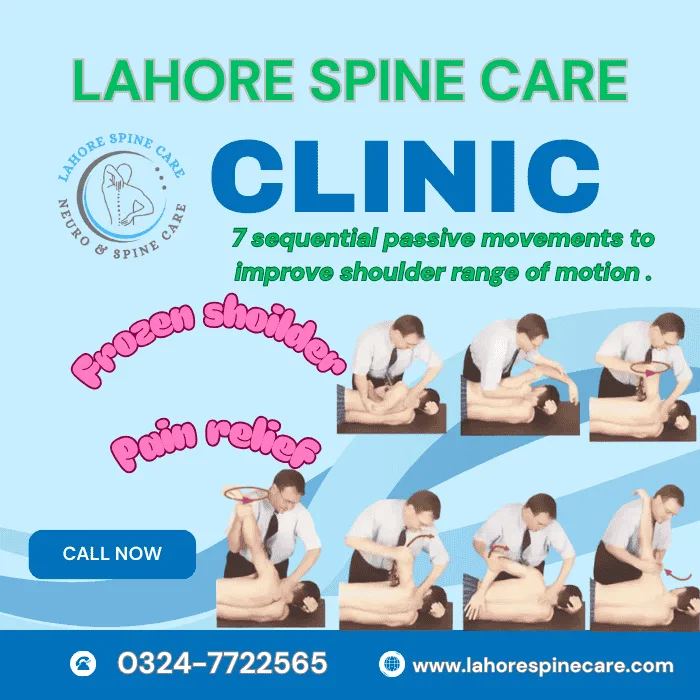LAHORE SPINE CARE

The Spencer Technique is one of many options of treatments that physical therapists and osteopathic practitioners apply to enhance mobility of the shoulder and alleviate pain. Shoulder pain is one of the commonest musculoskeletal complaints, and most of the time it is associated with stiffness, injury, overuse or degenerative alterations. Pain restricts mobility when it does not only impact the daily functions of dressing and moving objects but also impairs sleep and the quality of life.
Table of Contents
ToggleThe Spencer Technique
Spencer Technique is a time-tested method of manual therapy that involves the shoulder joint in particular. This technique was created by an osteopathic doctor called Dr Charles H. Spencer and helps to restore motion, improve circulation and decrease the number of adhesions in the shoulder through a series of specific movements designed to achieve this.
It is usually applied in the following conditions:
- Frozen shoulder (adhesive capsulitis)
- Post-surgical shoulder stiffness
- Shoulder pain associated with arthritis.
- Sports injuries and overuse syndromes.
- Shoulder tightness or lack of movement.
How does the Spencer Technique work?
The Spencer Technique is a series of seven steps of joint mobilization.
- Extension with gentle traction – stretches anterior tissues and promotes joint space.
- Flexion and light traction– mobilizes the posterior tissues.
- Compression-circumduction- This is a type of slowly rotating the joint that is compressed and lubricated to move smoothly.
- Traction Circumduction- stretches the capsule and enhances circulation.
- Abduction through soft traction – stretchesthe muscles and frees the side constraints.
- Internal rotation with traction – enhances the overhead and rear range of movement.
- Pump (lymphatic/venous drainage technique) – improves the flow of fluid and decreases swelling and inflammation.
All of these measures help to loosen up stiffness, relieve pain, and restore the usual scope of motion.
What to Expect in a Session.
- Assessment: To begin with, your therapist will assess your level of movement in the shoulder, pain and functional restriction.
- Treatment: Your therapist will manipulate your shoulder with the Spencer technique in the comfortable position. The process is typically tedious, calculated and time-consuming.
- Feeling by patient under treatment: You may have some slight stretching, slight pressure or minor pain – but not proper pain.
- Time: The method normally requires 15-20 minutes of a session that is normally combined with other interventions like soft tissue release, muscle strengthening or heat therapies.
- After care: The patients can experience a mild soreness (similar to a post-exercise soreness) that will disappear on the next day. Light stretching, taking water and having a rest are mostly recommended.
Advantages to the Spencer Technique.
- Gain in shoulder range of motion.
- Reduces pain and stiffness
- Enhances the performance of the joints.
- Improves the functioning of the joints.
- Additional follow-up after either surgical or injury rehabilitation.
Is It Right for You?
Treatment using the Spencer Technique is safe and non-invasive when it is administered by a skilled physiotherapist or osteopath. It is particularly useful in those individuals with problematic shoulder stiffness that restricts day-to-day living. But acute fractures, infections and those with severe joint instability should be medically cleared to start.
Final Thoughts
The shoulder is a very mobile but very vulnerable joint in the body. Some of the techniques, such as the Spencer Technique, have proven to be a holistic and effective method of alleviating pain, restoring mobility, and avoiding stiffness in the long run. Should you be experiencing pain in your shoulders, a visit to a physiotherapist trained in the technique might be a good step towards recovery and improvement of your life.
LAHORE SPINE CARE is proudly powered by WordPress